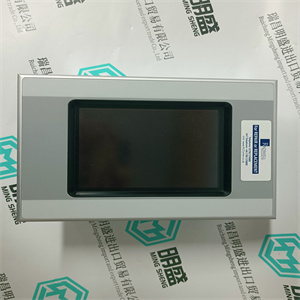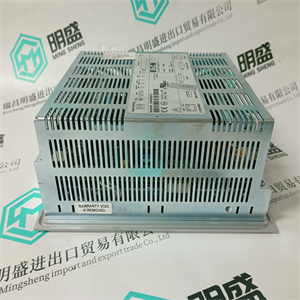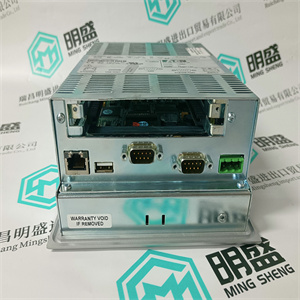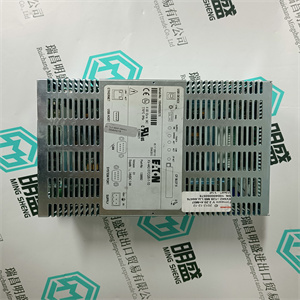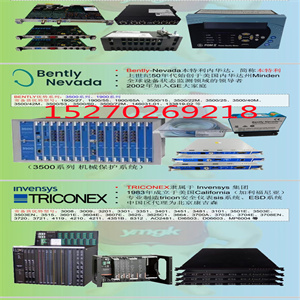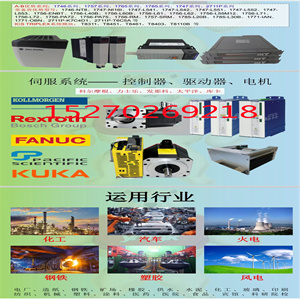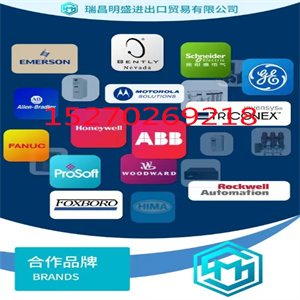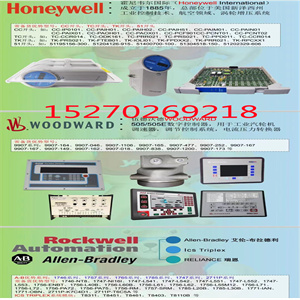140XBE10000 安装在Quantum背板扩展模块 Schneider
可以使用中继器单元进一步扩展段。
PROFIBUS PA可通过PROFIBUS链接连接到PROFIBUS DP
装置LD 800P,见附录C,推荐组件。更多详情
请参阅PROFIBUS网站上提供的PROFIBUS文档。
可以将以下I/O系统连接到PROFIBUS DP:
•通过FCI的S800 I/O和/或S800L I/O–参考S800 I/O文档。
•通过FCI CI920的S900输入/输出-参考S900输入输出文件。
•通过现场总线适配器200-APB12的S200 I/O和/或S200L I/O–参考S200
I/O文档。限制适用于PROFIBUS DP。
•其他I/O系统也可连接到PROFIBUS DP。参考
相关制造商文件。
有关各种I/O系统的更多信息,请参阅特定I/O文档。
注意,要在控制器内配置的I/O单元总数可能:
受限制,取决于许可证的单位范围参数。
3节I/O系统的配置
3BSE036351-600 A 171
PROFINET IO
PROFINET IO描述了面向PROFIBUS框架的设备模型。
它由插入位置(插槽)和I/O通道组(子插槽)组成。这个
PROFINET IO工程以PROFIBUS熟悉的方式进行。这个
分布式现场设备在配置期间分配给控制器。
图61 PROFIBUS系统结构示例
I/O系统3节配置
172 3BSE036351-600 A
PROFINET IO通过使用
PROFINET IO通信接口,CI871。
图62.带AC 800M的PROFINET IO
3节I/O系统的配置
3BSE036351-600 A 173
基金会现场总线高速以太网(FF HSE)
基金会现场总线(FF)是基于国际标准的现场总线协议
为制造业、过程中的应用而设计的标准
自动化和楼宇自动化。本现场总线标准的指导方针如下:
由现场总线基金会出版。
FF定义了两个通信配置文件H1和HSE。H1配置文件允许
传输速率为31.25kbit/s。它好用于直接通信
在一个链路(H1链路)中的现场设备之间。HSE简介基于标准
以太网首先是H1之间链路的强大主干
部分。典型的传输速率为:10Mbit/s或100Mbit/s。一
市场上已有的支持HSE配置文件的设备为FF
连接装置(例如LD 800HSE)。它们是连接
H1段和HSE主干上的现场设备。
基金会现场总线通过高性能网络连接至AC 800M
HSE总线采用FF连接装置。
有关HSE概况的更多详细信息,请参见FF规范。
在FF规范中解释了HSE背后的基本概念
系统架构(FF-581)和HSE概况(FF-941)。
FF子系统由FF链接设备组成(例如LD 800HSE,参见
附录C,推荐组件)相互通信
使用HSE协议。FF链接设备通常提供多个
基金会现场总线H1段(H1链路)。FF将设备与设备链接
42c类允许处理子公司周期性发布的数据
H1段将在HSE段上“重新发布”。通过使用HSE重新发布,
可以配置不同网络上现场设备之间的循环通信
H1段和HSE段上的装置。基金会现场总线HSE
H1网络和设备使用现场总线生成器进行配置
基金会现场总线。
FF子系统通过接口连接至IEC 61131控制器(AC 800M)
AC 800M中的FF HSE装置CI860,参见43页图7
在FF中,FF HSE单元是一个参与HSE的HSE装置
表达 140XBE10000 安装在Quantum背板扩展模块 Schneider
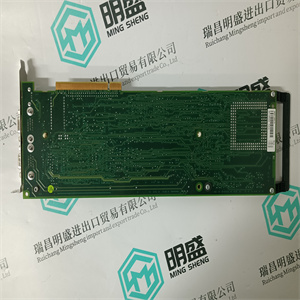 140XBE10000 安装在Quantum背板扩展模块 Schneider
segment can be further extended using repeater units.
PROFIBUS PA can be connected to PROFIBUS DP via the PROFIBUS linking
device LD 800P, see Appendix C, Recommended Components. For further details
refer to PROFIBUS documentation, available at the PROFIBUS Internet site.
It is possible to connect the following I/O systems to the PROFIBUS DP:
• S800 I/O and/or S800L I/O via FCI – refer to S800 I/O documentation.
• S900 I/O via FCI CI920 - refer to S900 I/O documentation.
• S200 I/O and/or S200L I/O via Fieldbus Adapter 200-APB12 – refer to S200
I/O documentation. Restrictions apply for PROFIBUS DP.
• Other I/O systems can also be connected to PROFIBUS DP. Refer to the
relevant manufacturer’s documentation.
For further information on the various I/O systems, see specific I/O documentation.
Note that the total number of I/O units to be configured within a controller may
be restricted, depending on the unit range parameter of your license.
Section 3 Configuration I/O Systems
3BSE036351-600 A 171
PROFINET IO
PROFINET IO describes a device model oriented to the PROFIBUS framework.
It consists of places of insertion (slots) and groups of I/O channels (subslots). The
PROFINET IO engineering is performed in a way familiar to PROFIBUS. The
distributed field devices are assigned to the controllers during configuration.
Figure 61. Example of System Structure for PROFIBUS
I/O Systems Section 3 Configuration
172 3BSE036351-600 A
The PROFINET IO is interfaced to the AC 800M controller , using the
PROFINET IO commmunication interface, CI871.
Figure 62. PROFINET IO with AC 800M
Section 3 Configuration I/O Systems
3BSE036351-600 A 173
FOUNDATION Fieldbus High Speed Ethernet (FF HSE)
FOUNDATION Fieldbus (FF) is a fieldbus protocol based on international
standards and designed for applications in the manufacturing industry, process
automation and buildings automation. The guidelines for this fieldbus standard are
published by the Fieldbus Foundation.
FF defines two communication profiles, H1 and HSE. The H1 profile allows a
transmission rate of 31.25 kbit/s. It is preferably used for direct communication
between field devices in one link (H1 link). The HSE profile is based on standard
ethernet serves first and foremost as a powerful backbone for the link between H1
segments. Typically transmission rates are: 10 Mbit/s or 100 Mbit/s. The first
devices that are already available on the market and support the HSE profile are FF
linking devices (for example LD 800HSE). They serve as a gateway between the
field devices on the H1 segments and the HSE backbone.
The FOUNDATION Fieldbus is linked to the AC 800M via the high-performance
HSE bus using FF linking devices.
More detailed information on the HSE profile can be found in the FF specifications.
The fundamental concepts behind HSE are explained in the FF specifications
System Architecture (FF-581) and HSE Profiles (FF-941).
The FF subsystem consists of FF linking devices (for example LD 800HSE, see
Appendix C, Recommended Components) which communicate with one another
using the HSE protocol. An FF linking device usually provides more than one
FOUNDATION Fieldbus H1 segments (H1 link). FF linking devices with a device
class of 42c allow process data that have been published cyclically on the subsidiary
H1 segments to be “republished” on the HSE segment. By using HSE republishing,
it is possible to configure cyclical communication between field devices on different
H1 segments and devices on the HSE segment.The FOUNDATION Fieldbus HSE
and H1network and the devices are configured with the Fieldbus Builder
FOUNDATION Fieldbus.
The FF subsystem is interfaced to the IEC 61131 controller (AC 800M) using a
FF HSE unit CI860 in the AC 800M, see Figure 7 on page 43. From the perspective
of FF the FF HSE unit is an HSE device which participates in the HSE
communication.
| 140XBE10000 安装在Quantum背板扩展模块 Schneider | | | |

